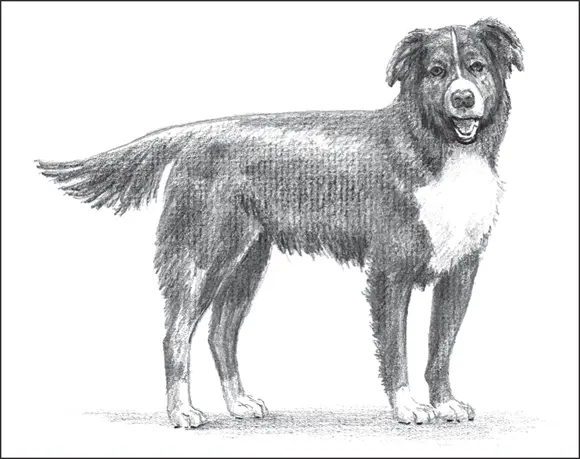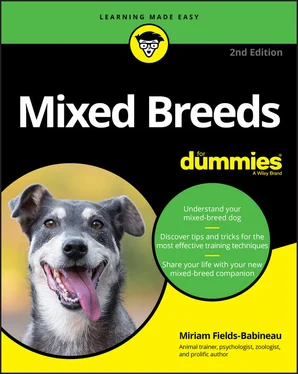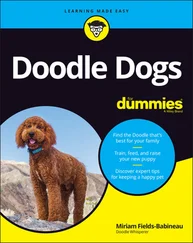1 ...6 7 8 10 11 12 ...17  This Toy breed tends to catch colds easily and is prone to herniated disks, dislocated kneecaps, trichaiasis (eyelashes growing inward, toward the eyeballs), and breathing problems due to their shortened snouts. Heart problems are also a common health issue in Pekingese. As with many other Toy breeds, they have a tendency to easily become overweight so should never be fed a high-calorie diet.
This Toy breed tends to catch colds easily and is prone to herniated disks, dislocated kneecaps, trichaiasis (eyelashes growing inward, toward the eyeballs), and breathing problems due to their shortened snouts. Heart problems are also a common health issue in Pekingese. As with many other Toy breeds, they have a tendency to easily become overweight so should never be fed a high-calorie diet.
The American Canine Hybrid Club recognizes numerous Pekingese hybrids, ranging from the Foxingese (Pekingese/Toy Fox Terrier) to the Yorkinese (Pekingese/Yorkshire Terrier).
Though Shih Tzus look like Lhasa Apsos, their personalities are totally the opposite. Where Lhasas are dominant and willful, Shih Tzus are gentle, easy-going, and very willing to learn. They’re happy, hardy, and have loads of character. It’s no wonder that this is a popular addition to many hybrid dog combinations.
They grow up to 11 inches tall at the shoulder and weigh about 9 pounds, though they do have a tendency to become overweight because they’re very food oriented. They have round heads, short noses, and lots of fur around their faces. Shih Tzus have long, soft overcoats with a woolly undercoat, making them fairly hardy in extreme temperatures for short periods of time. Their tails curl over their backs, and they come in a huge variety of colors.
Because of their short noses, they wheeze and snore, along with having respiratory problems from time to time. They can have spinal disc disease due to their long back and short legs. However, compared to many Toy breeds, their genetic defects are few.
 Though it has been done, Shi Tzus should not be bred with other dogs who have similarly short noses and large bulging eyes. This can create some horrendous health issues with the hybrid pups.
Though it has been done, Shi Tzus should not be bred with other dogs who have similarly short noses and large bulging eyes. This can create some horrendous health issues with the hybrid pups.
The American Canine Hybrid Club recognizes more than 25 Shih Tzu hybrids, ranging from the Fo-Tzu (Shih Tzu/Toy Fox Terrier) to the Bea-Tzu (Beagle/Shih Tzu).
Pomeranians resemble foxes, only with thicker, fluffier fur. Their wedge-shaped heads; straight, triangular ears; and pointed noses are foxlike, as are their baby-doll faces. Poms have dark, almond-shaped eyes and a double coat, which can be any solid color, though there are some that are parti-colored, such as black and white.
Descended from Nordic breeds bred to withstand extremely cold temperatures and work all day pulling sleds, Pomeranians are some of the hardiest of the Toy breeds. Poms aren’t big enough to pull a sled (though if you put about ten of them together, they’d give it a good try), but they still believe they’re big, tough dogs. This makes them willful, bold, and often temperamental — though not stupid. If you use a positive training technique with lots of incentive, your Pom will do whatever you want.
Pomeranians are a popular parent breed for hybrid dogs because they offer the beautiful fluffy coat, distinct facial features, and small size. The average Pom doesn’t grow much larger than 12 inches tall at the shoulder and weighs a mere 7 pounds.
 Though Pomeranians are tough little dogs, they do have a genetic tendency toward specific health issues, including luxating patella (the kneecap slips out of its proper groove and moves against the thighbone), heart and skin problems, as well as eye infections. Also, as with most Toy breeds, they are prone to dental problems and weight gain.
Though Pomeranians are tough little dogs, they do have a genetic tendency toward specific health issues, including luxating patella (the kneecap slips out of its proper groove and moves against the thighbone), heart and skin problems, as well as eye infections. Also, as with most Toy breeds, they are prone to dental problems and weight gain.
Because Pomeranians have large, bulging eyes and the tendency toward specific health problems, they should not be bred with breeds that have similar attributes.
The American Canine Hybrid Club recognizes more than 25 Pomeranian hybrids, ranging from the Pom-Coton (Pomeranian/Coton de Teluar) to the Poshies (Pomeranian/Shetland Sheepdog).
Yorkshire Terrier hybrids
Yorkies are very small toys with a long silky coat that falls straight down on either side. Although the puppies are usually black and tan, they mature to steel gray and gold. This breed has a flat head, medium-length muzzle, black nose, and upright V-shaped ears. This is another Toy dog who doesn’t have a small personality — they are Terriers, after all. As tenacious as they come, Yorkshire Terriers have a high energy level, are aggressive with strangers and other dogs, are demanding of attention, and are territorial. Yorkies are often spoiled and catered to due to their small size (a mere 7 inches tall at the shoulder, and hardly ever more than 7 pounds). This coddling creates a mini-monster. Yorkshire Terriers, as with dogs of any size, need structure and leadership.
 Yorkies do have some genetic health problems. These include abnormal skull formations, paralysis of the hindquarters caused by herniated discs, and other spinal problems. They are also prone to dental abnormalities and excessive tooth decay. They have a poor tolerance to anesthetics and a tendency toward congenital liver disease.
Yorkies do have some genetic health problems. These include abnormal skull formations, paralysis of the hindquarters caused by herniated discs, and other spinal problems. They are also prone to dental abnormalities and excessive tooth decay. They have a poor tolerance to anesthetics and a tendency toward congenital liver disease.
The American Canine Hybrid Club recognizes more than 15 Yorkshire Terrier hybrids, ranging from the Fourche Terrier (West Highland White Terrier/Yorkshire Terrier) to the Snorkie (Miniature Schnauzer/Yorkshire Terrier).
Intelligent perceptions: Border Collie hybrids
People who want to create a hybrid based on intelligence and not coat type will often use the Border Collie breed as one of the parents. One of the positive outcomes of using Border Collies in a hybrid crossing is that they have few genetic health problems.
Borador (Border Collie/Labrador Retriever)
The Borador (see Figure 2-7) is often medium to large with large feet, a long muzzle, and light brown eyes; some have upright ears. The coat can be either medium length or short with any combination of colors ranging from all yellow to all black or with typical Border Collie white around the neck, on the paws, and on the nose.

Illustration by Barbara Frake
FIGURE 2-7:Here’s a typical Borador. You can see both breeds very clearly in this dog.
These two breeds complement each other well. Where the Border Collie might be overly sensitive, the Labrador Retriever is bold. Where a Lab may not be able to figure something out, the Border Collie puts in reason. Where a Border Collie might constantly want to chase farm animals and round them up, the Lab feels more relaxed about work, more likely to wait for the cues from his human companions instead of striking out to work on his own.
In all, Boradors are easy to care for, easy to train, friendly, and often very healthy. They’re wonderful companions.
Bordernese (Bernese Mountain Dog/Border Collie)
A Bordernese (see Figure 2-8) appears much like a Border Collie only larger. The coloring of the coat is similar with black and white, sometimes tan eyebrows. The coat texture is also similar: long, smooth, and thick. Both breeds have long muzzles, dark eyes, and long tails with a slight upward curve.
Читать дальше

 This Toy breed tends to catch colds easily and is prone to herniated disks, dislocated kneecaps, trichaiasis (eyelashes growing inward, toward the eyeballs), and breathing problems due to their shortened snouts. Heart problems are also a common health issue in Pekingese. As with many other Toy breeds, they have a tendency to easily become overweight so should never be fed a high-calorie diet.
This Toy breed tends to catch colds easily and is prone to herniated disks, dislocated kneecaps, trichaiasis (eyelashes growing inward, toward the eyeballs), and breathing problems due to their shortened snouts. Heart problems are also a common health issue in Pekingese. As with many other Toy breeds, they have a tendency to easily become overweight so should never be fed a high-calorie diet.











